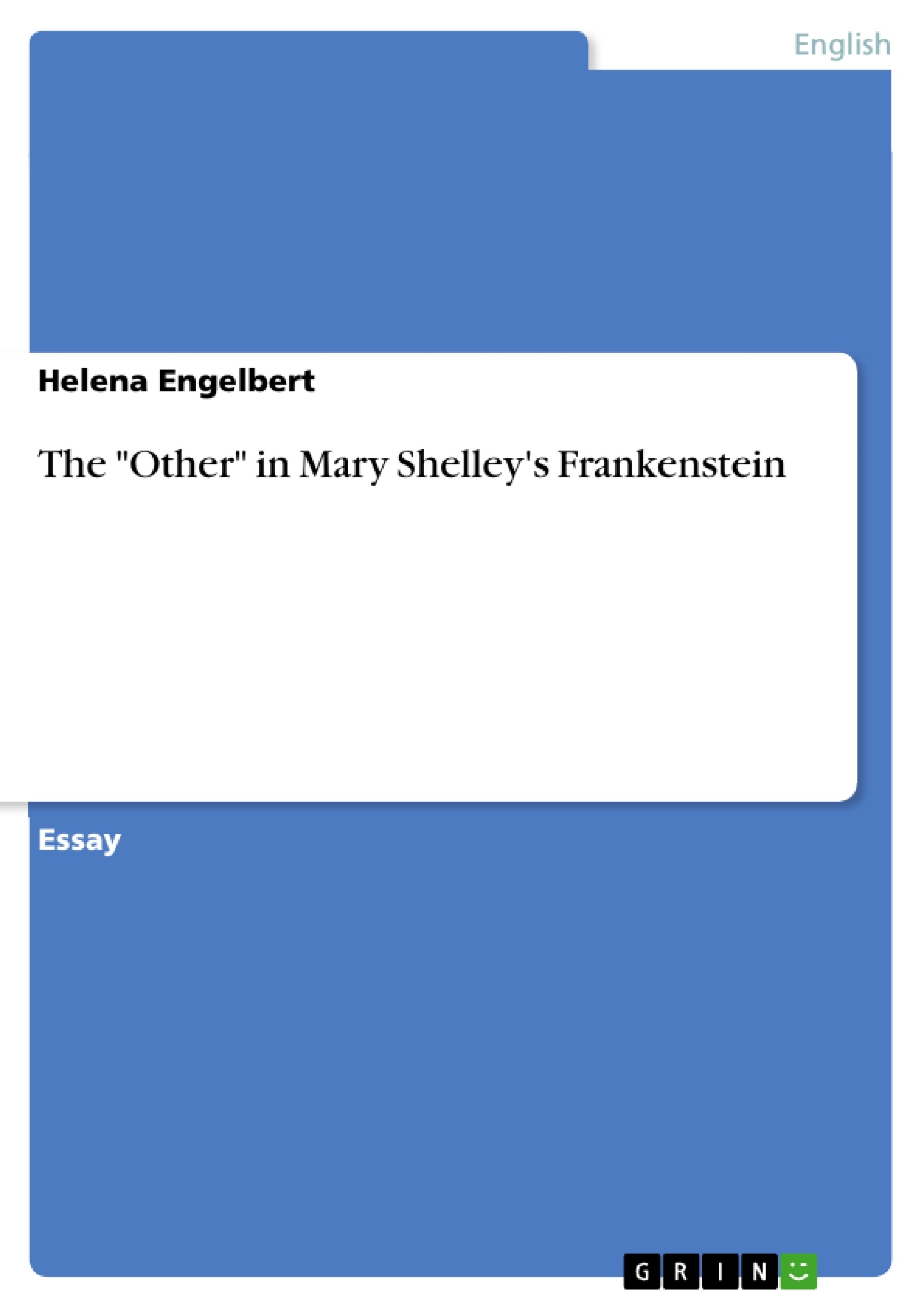Since Edward W. Said proposed the idea of "the Other" in his work "Orientalism", the term became popular in recent cultural and literary studies. Othering describes the process of forcing an individual or a group in the role of "the Other" by portraying and defining it as fundamentally different. This essay will examine inhowfar the notion of othering can also be found in Mary Shelley's Frankenstein.
It will be shown that the creature is othered by his representation as inhuman throughout the novel. By studying the description of the creature's appearance, the language and setting of the novel and the interaction with the other characters, it can be understood how Victor Frankenstein's creation is made alien and is denied the status of a human being.
Inhaltsverzeichnis (Table of Contents)
- Introduction
- The Creature's Appearance
- Othering through Diction and Language
- Choice of Setting
- Contact with Society
- Conclusion
- Works Cited
Zielsetzung und Themenschwerpunkte (Objectives and Key Themes)
This essay examines how Mary Shelley's Frankenstein utilizes various literary techniques to other the creature, highlighting his representation as inhuman and denying him the status of a human being. The analysis focuses on the creature's appearance, the language used to describe him, and the chosen setting as factors contributing to his alienation.
- The Creature's Physical Appearance and Its Role in Othering
- The Impact of Language and Diction on the Creature's Perception
- The Significance of Setting in Alienating the Creature from Society
- The Creature's Lack of Name and Its Connection to Identity and Othering
- The Creature's Struggle to Find a Place in Society
Zusammenfassung der Kapitel (Chapter Summaries)
- Introduction: Introduces the concept of "the Other" as proposed by Edward W. Said and its relevance to Mary Shelley's Frankenstein. It establishes the creature as an example of othering and outlines the key aspects of the analysis.
- The Creature's Appearance: Explores how the creature's physical appearance, from his unnatural creation to his distinctive features, contributes to his othering. The analysis examines the creature's physical construction, his superhuman abilities, and his lack of bilateral symmetry as factors that make him appear inhuman.
- Othering through Diction and Language: Examines how the language used to describe the creature reinforces his othering. This section analyzes the derogatory terms used to address the creature, the use of the pronoun "it" instead of "he," and the emphasis on the creature's different "species" as examples of language that dehumanizes him.
- Choice of Setting: Explores how the setting of the novel, primarily European locations, contrasts with the creature's perceived alien nature. It analyzes how the creature's association with isolated regions like the mountains and the arctic reinforces his othering.
Schlüsselwörter (Keywords)
The key keywords and focus topics of this essay include: othering, Frankenstein, Mary Shelley, creature, inhuman, appearance, language, diction, setting, society, identity, alienation, species, namelessness, European civilization.
- Citar trabajo
- Helena Engelbert (Autor), 2018, The "Other" in Mary Shelley's Frankenstein, Múnich, GRIN Verlag, https://www.grin.com/document/457176



